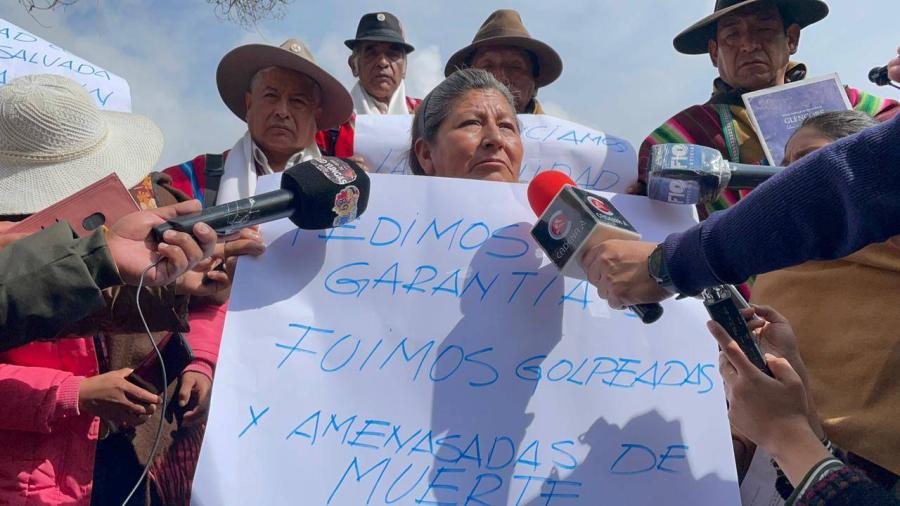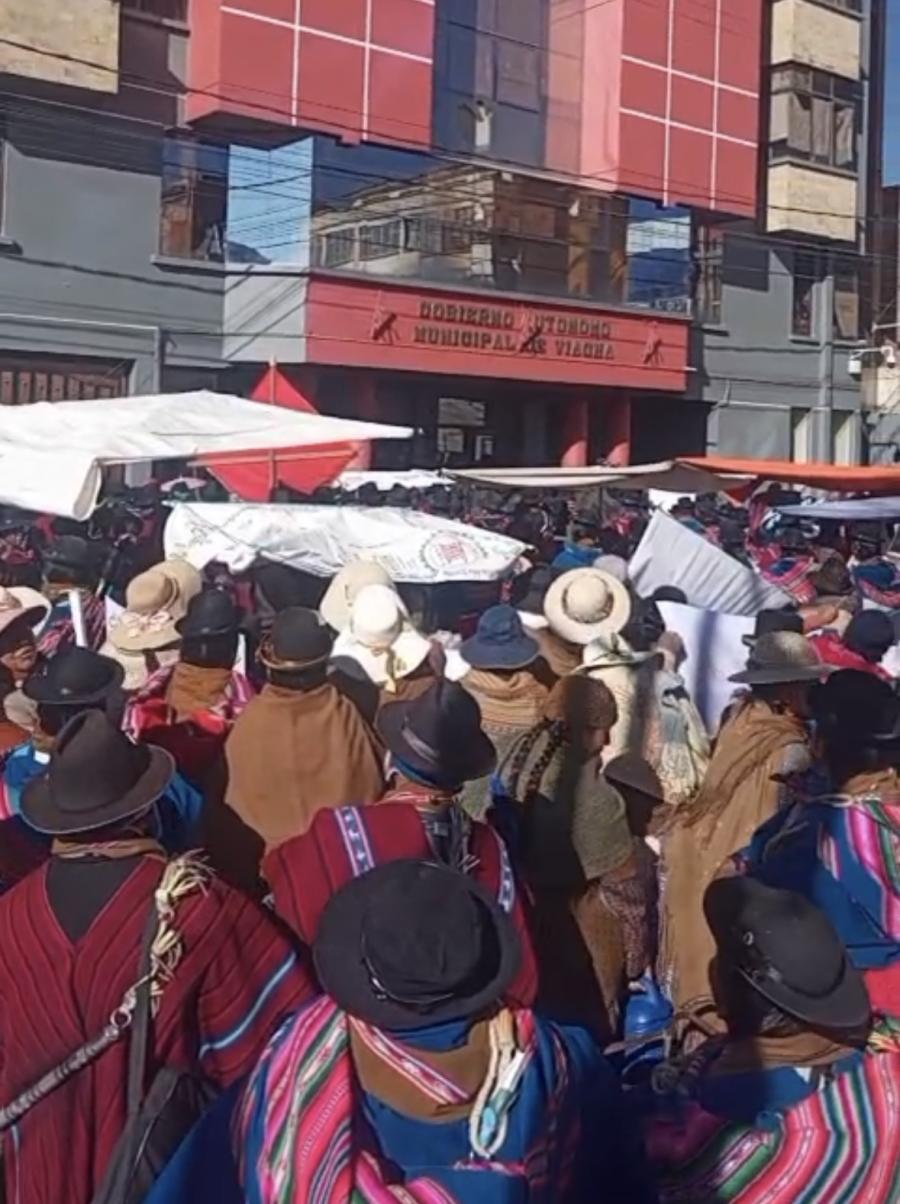Indians from five Amazonian countries presented their cases at UN meetings in July/August.
In August of this year, the UN Working Group on Indigenous Populations met in Geneva to consider the issues of indigenous peoples' rights to land. Although Mário Juruna, the Xavante Indian Deputy from Brazil, stole the show with the European press and television, a much more important story was unfolding: for the first time three Amazonian Indians, representing Indian organizations from five Amazonian countries, participated in the Working Group sessions. More significant, it was the first time that these Indian organizations, whose efforts to coordinate began in 1981, had presented themselves as a single unified delegation to an international forum. To take that important step, Indian representatives from Brazil, Colombia, Ecuador, Peru and Bolivia have had to invent ways of communicating across enormous linguistic, political and geographical barriers which traditionally have kept the Indians of the Amazon Basin isolated from one another.
With only a few exceptions, the plight of the world's indigenous populations has been ignored by the international community throughout this century. Conveniently omitted from the UN decolonization process, indigenous peoples and their territories have been brutally subjected to programs of national integration by emerging states and to strategies of economic development and integration into capitalist markets.
Frustrated by their attempts to gain redress from the political and legal systems of the states which have incorporated them, indigenous peoples began approaching the international community during the 1970s to seek recognition and protection. Excepting genocide, their efforts were hampered by the lack of international treaties which specifically protected the group rights of these peoples.
Existing human rights treaties are limited in focus to the declared rights of individuals on a nondiscriminatory basis as citizens of signatory states. Those indigenous peoples who have maintained the social, economic and cultural coherence of their land-based societies but who continue to be threatened by efforts to integrate them into the dominant societies and to exploit the resources they have traditionally occupied, have remained outside of the international system.
In 1982 the UN Commission on Human Rights set up a Working Group on Indigenous Populations to conduct hearings on the situation of indigenous peoples and to recommend standards, applicable internationally, which would protect the group rights of these people. From its founding, the Working Group opened its proceedings to the testimonies of indigenous peoples and their support groups. This opportunity was seized upon immediately by both indigenous and support groups which had access to the international community through personal and political contacts, and which had access to funds to pay their costs to attend the hearings in Geneva. With few exceptions, the cost of attendance excluded village and community based peoples whose incipient organizations had access to neither. In many cases local organizations were unaware of the existence of the Working Group.
South American representation to the Working Group proceedings was sparse, limited to the Consejo Indio de Sud America (CISA) and its supporters. This delegation, despite the political and financial support it received from the European community, was by and large ineffectual in its participation for several reasons. CISA, since its founding in 1981, at a conference in Peru sponsored largely by non-Indians, has never represented the interests of land-based Indian communities in South America. The idea of a CISA was promoted by the urban-based indianist movements, notably the Movimiento Indio Peruano (MIP) and the Movimiento Indio Tupac Katari (MITKA). While some rural, community-based Indian organizations were incorporated into CISA at its founding, those espousing indianist ideology and interests controlled the organization from the beginning.
By 1982 CISA had become the principal proponent of the Tahuantinsuyo version of indianist ideology which proposed a return to the idealized institutions and values of the former Inca Empire. This platform did not speak to the concrete problems of land, resources, production and consumption of modern day Quechua and Aymara Indians whose names were invoked. Further, such a platform does not speak to the problems of the Amazonian Indians, who live in a social, cultural and ecological reality different from their Andean counterparts. Many lowland groups, whose ancestors had suffered at the hands of the expanding Incan state, took offense at the idea of idealizing and resurrecting it.
Finally, because CISA operates in many ways like a traditional Latin American political party, it has always had intense factional disputes between leaders. In 1983, this factionalism led to considerable confusion at the meeting of the Working Group in Geneva. Two CISA factions accused each other of being "false Indians." That event drove the message home to the many rural community-based organizations that if the concrete realities of their situation were to be taken into account by the working group, they had to represent them at the proceedings themselves.
The construction of viable organizations which unite the Amazonian Indian communities and which permit an effective legal and political defense of their land and other rights has been a painstakingly slow process. The geographic isolation and distance between settlements have produced enormous logistical problems. The structural egalitarianism of lowland societies which dictates against hierarchical models of organization has also been a very fundamental challenge to organizations which seek to permit maximum participation with a minimum concentration of power. The resulting Congresses, Councils, Federations, Unions and Centrals continue to search for the best form to channel, express and act on the consensus of their community-based constituencies.
Despite a series of international conferences on Indian issues held in Latin America throughout the 1970s, it was not until 1981, in Puyo, Ecuador, that indigenous representatives of the Amazon region met and became aware of their common interests. The Puyo Conference was organized by the Interamerican Indigenist Institute to discuss the issues of Indian rights within the context of the Amazonian Pact - an economic, political and security agreement signed by those countries which comprise the Basin. Along with the official delegates and observers of the Pact signatory governments, the Institute invited the major Indian organizations representing indigenous populations in the Amazon to send their observers. Despite the political rhetoric about the progress made in integrating the indigenous populations into development efforts, indigenous observers found sufficient common ground among themselves to press for a second meeting in 1983.
These observers decided that prior to the 1983 meeting, the delegates of the Indian organizations should meet to analyze their common concerns and to establish their own agenda. That meeting was organized by AIDESEP and was held in Lima in July 1982. Members of CIDOB (Bolivia), UNI (Brazil), CONFENIAE (Ecuador), Federación de Amazonas (Venezuela) and AIDESEP (Peru) attended. Although this meeting did not produce an agenda or common strategy for which the organizers had hoped, it did deepen the solidarity among those organizations represented at the meetings.
In March 1983, the second meeting of the Indigenist Institute and the Pact countries was held in Puerto Ayacucho, Venezuela. The official participation of the Amazonian Pact governments was eliminated; only indigenous leaders and experts of the Pact countries were invited. However, only one Indian delegate attended. The efforts to improve the communications and coordination among the Amazonian Indian groups had apparently failed.
Spurred by the CISA fiasco at the Working Group that summer (1983), AIDESEP proposed a second meeting of delegates of the Amazonian Indian organizations to discuss the human rights of indigenous peoples within the international context. In March 1984, a six-day meeting, held in Lima, was attended by twenty indigenous delegates from five Amazonian countries - CIDOB, UNI, CONFENIAE, AIDESEP and ONIC (Colombia). Several invited experts and observers also attended.
The agenda for the meeting was challenging and difficult. For two days, visiting experts explained and discussed the international human rights system, including both the UN and the Interamerican systems. The UN Working Group was analyzed in detail with special emphasis put on the themes for the 1984 meeting: rights to land and resources and the definition of "indigenous group." Perhaps the most informative part of these sessions were the frank discussions of the politics of human rights work, of the UN and of the indigenous issues within the international context. A challenging discussion was held on the meaning of such concepts as nation, people, nationality, ethnic group, minority and class; their relationship to state, nation-state and government; and finally their applicability to indigenous Amazonian societies in 1984.
For two days the five delegations offered oral reports on the current situation of their organizations and of the communities they represent. A number of important themes emerged from these discussions:
* the threat posed by state-sponsored colonization and economic development in the Amazon;
* strategies for the defense of the indigenous land base;
* the participation of indigenous peoples in the local political process;
* the relations between lowland and Andean indigenous groups and their organizations; and
* the challenge of consolidating autonomous and representative organizations.
The last two days were spent discussing the future. This touched off lively debates about the wisdom of coordinating the activities of the five organizations present. After the disappointing experiences with CISA, several delegates were reluctant to formalize cooperation across national boundaries, acutely aware of the divisiveness it had caused in the past. As the discussions progressed, there was unanimous agreement on two basic points. First, it was agreed that the primary arena for the indigenous struggle was within each country, and therefore, the existing indigenous organizations within each national context necessarily played the key role in the struggle for land, resources and cultural survival. Because Indian peoples have no choice but to live with non-Indians within each country, it is important for these peoples to seek broader alliances for both political action and autonomous development. International work was acceptable as a strategy to take advantage of particular circumstances which would reinforce struggles at the national level.
Second, it was agreed that any effort to coordinate activities across national boundaries must respect the autonomy and equality of the participating organizations. There was a clear rejection of the hierarchical model which underlies CISA and the peasant unions, in which the higher level organizations sit at the apex of the hierarchy with the right to represent and speak for all those of inferior rank. Those present were acutely aware of how that model had created an elite of international Indian bureaucrats. The delegates did not want to repeat that experience.
In conclusion, the five organizations agreed to establish a "Coordinating Group of Indigenous Organizations of the Amazon Basin" and to plan and coordinate their future activities at the international level. Following the earlier agreements, it was clear that the Coordinating Group would not take precedence over the national organizations, nor would international work take precedence over the national agenda. The functions of the Coordinating Group were limited to opening communication among indigenous organizations of the Amazon Basin and coordinating their activities in different international fora.
By all measures, this was a positive development. Observers at the 1984 Working Group on Indigenous Populations agree that the delegates from the Amazon Basin Coordinating Group made one of the best prepared and clearest presentations to that forum. We can expect to see more of the same from Amazon Basin Indians in the future. However, three areas threaten the future success of their coordinating effort. Can the Coordinating Group maintain its egalitarian structure and prevent the development of an international "Indian" elite? Can the Coordinating Group and its members develop similar relations of equality and coordination with the organizations which represent indigenous people of the highlands? And finally, can funding agencies be convinced to finance the international efforts of the Coordinating Group rather than those of its individual members? These areas need to be monitored closely.
Article copyright Cultural Survival, Inc.


